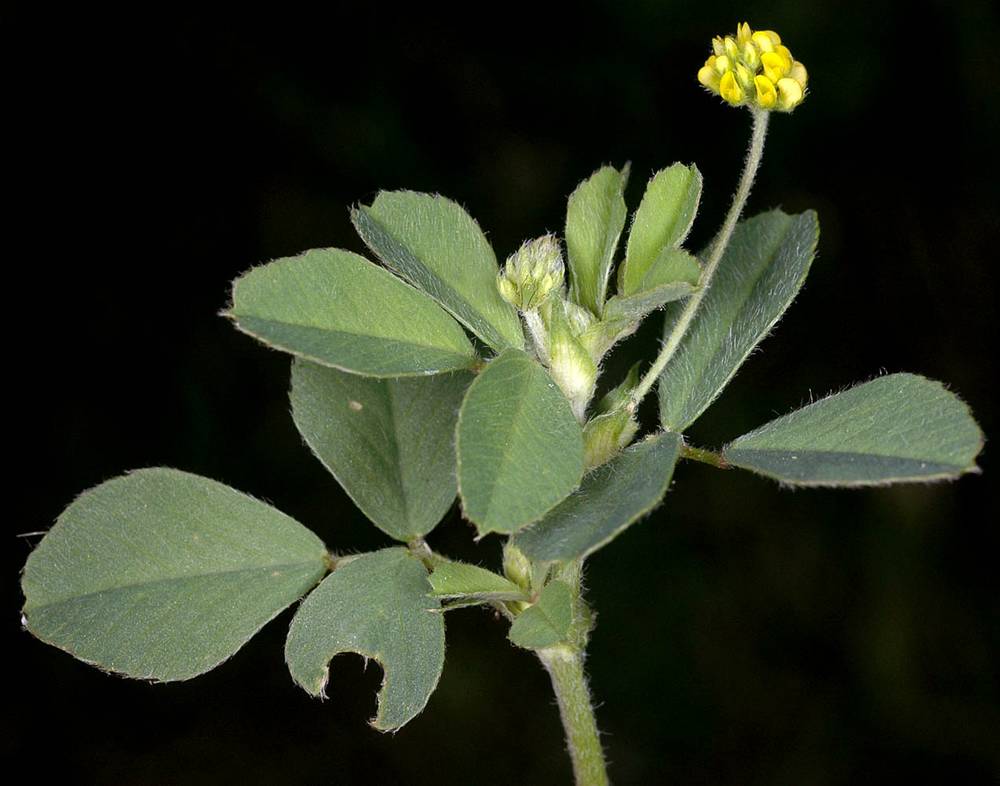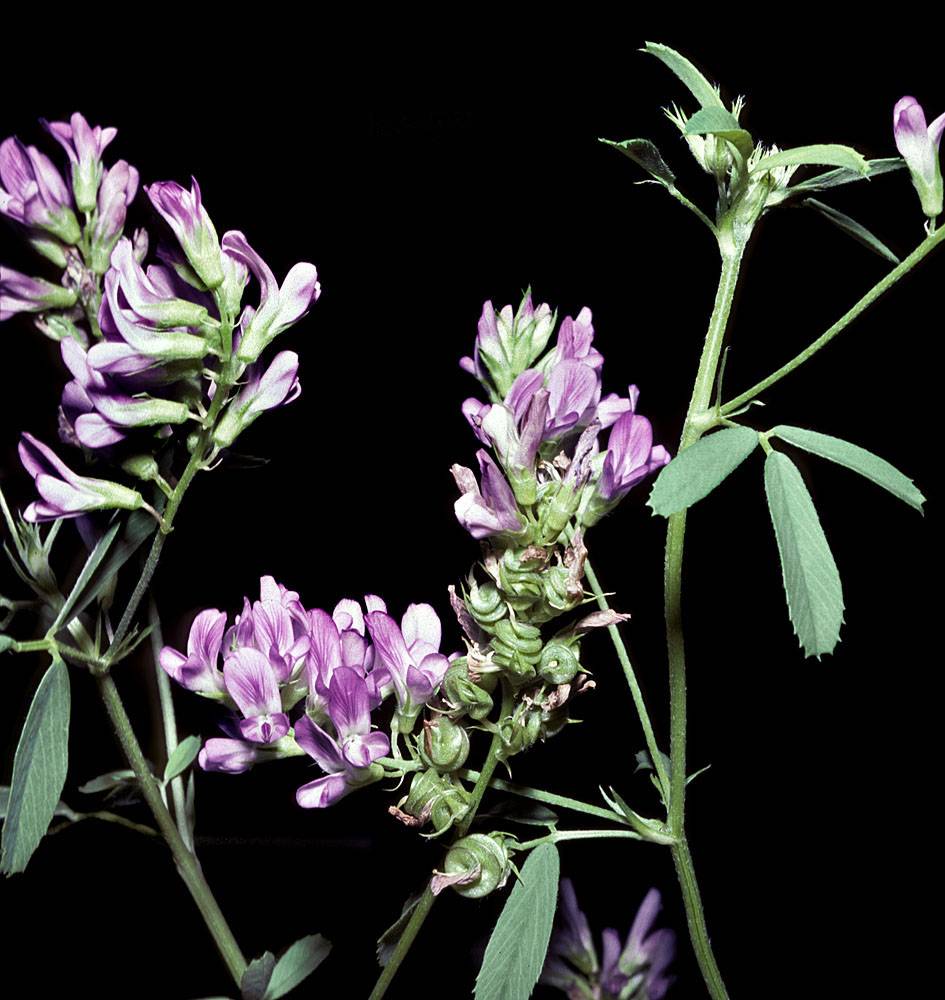Medicago lupulina
Medicago sativa
black medic, hop clover
alfalfa, lucerne
pubescent.
decumbent to erect, glabrous to puberulent.
sub-palmate;
leaflets obovate; length ? width, 7–13(20) mm, bases cuneate;
margins distally serrate;
veins prominent;
tips obtuse to rounded;
surfaces slightly pubescent; more so abaxially;
petioles 2–10(15) mm;
petiolules 0.5–4 mm;
stipules 4–8 mm;
margins entire or toothed.
sub-palmate;
leaflets narrowly lanceolate to obovate; length > width, 8–29 mm, bases cuneate;
margins distally serrate;
veins prominent;
tips truncate to rounded;
surfaces pubescent;
petioles 3–15 mm;
petiolules 1–6 mm;
stipules 6–14 mm;
margins entire to sharply toothed.
10–20-flowered; ovoid, 7–20 × 5–8 mm;
peduncles 10–30 mm;
pedicels 0.8–1 mm.
8–30-flowered; ovoid to oblong;
peduncles 8–40 mm;
pedicels 1–3 mm.
calyces 1–1.5 mm;
corollas 2–3 mm, yellow.
calyces 4–5.5 mm;
corollas 8–10 mm, violet or variegated yellow-violet.
reniform, 2.5–3 × 2–2.5 mm, becoming black with age, glabrous to pubescent, strongly concentric-veined, unarmed.
spirally coiled 2–3 turns, rarely sickle-shaped, with doughnut-like hole visible in center of coils, 3–5 mm, villous, unarmed.
1; oval to reniform, 1.5–2 × 1–1.2 mm, yellow to olive-green.
several, reniform, 1–2.5 × 1–1.5 mm, yellow; brownish; greenish yellow or violet-brown.
= 16,32.
=16, 32.
Medicago lupulina
Medicago sativa
Riparian areas, meadows, lawns, roadsides, disturbed areas. Flowering May–Jul. 0–1600 m. All ecoregions. CA, ID, NV, WA; worldwide. Exotic.
Medicago lupulina is characterized by dense, ovoid inflorescences consisting of ten or more tiny yellow flowers. This is the only species of Medicago in Oregon with one-seeded fruits.
Sandy or rocky areas, riparian areas, fields, roadsides, disturbed areas. Flowering Jun–Aug. 0–1500 m. BR, Casc, Col, CR, ECas, Lava, Sisk, WV. CA, ID, NV, WA; worldwide. Exotic.
Medicago sativa is the only Oregon species with purple or variegated flowers and with coiled, non-spiny fruits containing several seeds. It also has the largest flowers (approaching 1 cm in length) and more flowers per inflorescence than most of our other species. Medicago sativa is commonly used as a cover crop or green manure.
Nurul Khalib, Melanie Link-Perez
Nurul Khalib, Melanie Link-Perez
- Local floras:
BC,
CA,
OR,
WA
- Local Web sites:
CalFlora,
CalPhotos,
Flora NW,
PNW Herbaria,
Turner Photog.
WildflowerSearch
iNaturalist (observations)
USDA Plants Database
- LBJ Wildflower Center
- SEINet
- Plants of the World Online
- Encyclopedia of Life
- Wikipedia
- Google Image Search
- Local floras:
BC,
CA,
OR,
WA
- Local Web sites:
CalFlora,
CalPhotos,
Flora NW,
PNW Herbaria,
Turner Photog.
WildflowerSearch
iNaturalist (observations)
USDA Plants Database
- LBJ Wildflower Center
- SEINet
- Plants of the World Online
- Encyclopedia of Life
- Wikipedia
- Google Image Search





